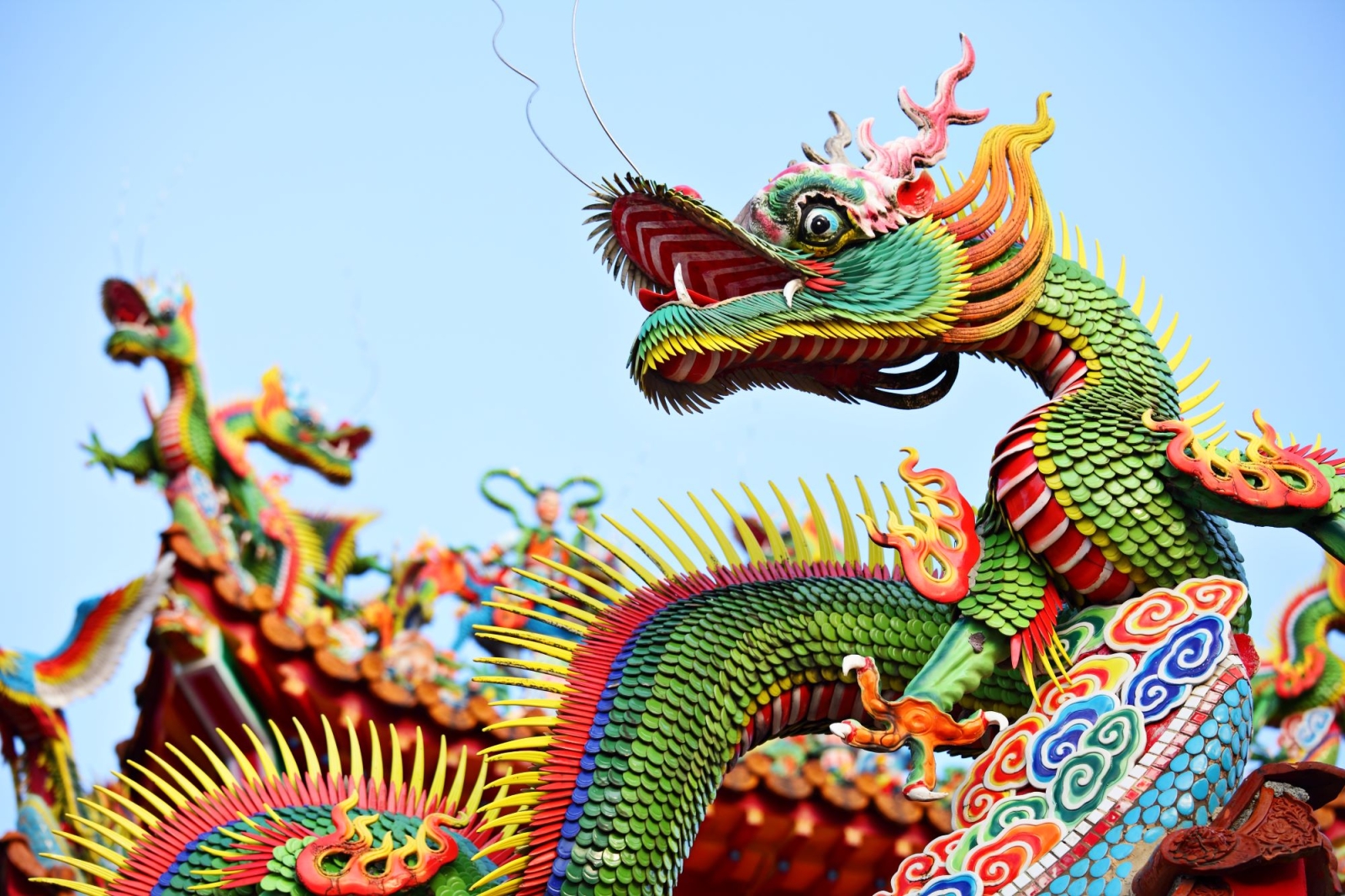Now that the New Year festivities are over, all attention in China has shifted to the Great Hall of the People in Beijing, where from March 4 to 11 the so-called Two Sessions (Liang Hui), the People's Republic's most important annual political event, took place.
For a week, Communist Party leaders and more than 2,000 members of advisory bodies discussed the year that just ended and the year ahead, assessing goals achieved and setting new ones. And the year of the Dragon, symbolic of great achievements and new beginnings, is not expected to disappoint.
Hence, in the economic report presented on March 5 by Prime Minister Li Qiang (for the first time without an international press conference), the slogans that dominate the 40 or so pages of New Year's resolutions are essentially two: the concept, already in fashion for some time, of “high-quality development” (gao zhiliang fazhan) and the newly introduced concept, referring to innovation, of “new productive forces” (xin sheng chanli). The vision of a new strongly technology- and science-driven China is thus consolidated, but one that is currently being asked to “tighten their belt” to overcome the crisis and, above all, to rally around the increasingly undisputed leader Xi Jinping.
We proceeded to read the document, also looking for, in between the calls for growth, reminders of the sustainable development that should be one of the cornerstones of Meili Zhongguo, Xi's “beautiful China.”
How much will China's economy grow (and why Li Qiang did not hold a press conference)
This year, at the opening of Two Sessions, international media attention was mainly captured by the lack of a press conference by the prime minister. A breach with tradition that has been read as yet another Chinese step backward on the transparency front, but which in reality, as several observers have noted, only reiterates the leadership set-up of recent years. Maintaining typical Dragon pragmatism and with a view to streamlining the work of Congress, the press conference of Li Qiang, Xi's most faithful in office since 2023, may simply have been deemed “superfluous.” As if to say: it is useless for Li to speak, since the line to follow – as reiterated several times in his report – is the one dictated by Xi Jinping.
Pleasantries eliminated, from the first day of the Congress, one figure above all was expected: the GDP growth forecast for 2024. The number invariably came, and it must be said that it was not much of a surprise. In fact, on the prudent note, Li Qiang announced an expected growth of 5 percent, about the same as 2023, which closed with +5.2 percent. After the slowdown in 2022, which had missed its targets with a growth of only 3 percent, now the Chinese government is wary of making overly ambitious promises and prefers to tread lightly.
Along with GDP percentage points, the prime minister also vows to create 12 million new jobs in urban areas (same number as in 2023) and bring the unemployment rate in cities down to 5.5 percent. Urban unemployment is a real sore spot for the Chinese government, especially among the younger segment of the population: in fact, the percentage of 16- to 24-year-olds who cannot find a job has now exceeded the critical threshold of 20 percent.
Another important number in the report concerns the increase in the budget for military spending, which will grow by 7.2 percent. Even so, however, the total will not even reach half of U.S. military spending.
A crisis to overcome
In the first part of his report, Prime Minister Li Qiang gives an account of the goals achieved in 2023, not hiding (which would have been difficult) the challenges encountered in the post-Covid era. “As already deep-rooted issues worsened, new problems emerged,” the document reads. “A decline in external demand coincided with a lack of domestic demand, and both cyclical and structural weaknesses surfaced. Risks in the real estate sector, local government debt, and small and medium-sized financial institutions have been aggravated.”
From the real estate sector, moreover, there are no signs of recovery: after Evergrande's bankruptcy, announced in January, the other major real estate developer, Country Garden, also received a liquidation petition in late February for non-payment of a $205 million loan. On the export side, however, protectionist measures taken by various Western markets for electric vehicles, solar panels and batteries could still reduce the volume of the Dragon's trade.
This is why Li Qiang discusses measures to stimulate domestic consumer spending, particularly toward the automotive and technology sectors. Although, at the same time, he asks provinces to “tighten their belts” and not think about leaning on subsidies and welfare.
New productive forces: research and technology
Increasing consumer spending capacity clearly is not enough to overcome a slowdown that threatens to become structural. The key word then, as also reiterated in Xi Jinping's speech published by the Communist Party's bimonthly Qiushi, is “modernization.” It is not just about modernizing industry, but the entire society, starting with education and training, which the Chinese government is banking on to create an “innovation ecosystem” that is internationally competitive and would progress on the road to “high-quality development.”
Here is where the xin sheng chanli come in, the “new productive forces” to be entrusted with the arduous task of offsetting the increasingly failing traditional levers of the Chinese economy, namely manufacturing exports and the construction and real estate sectors.
But what does “new productive forces” mean? Basically, Xi's China aims to become the leading country in advanced industry and frontier technologies, closing the gap (perhaps more perceived than real) with the United States in research and innovation. This is what “high-quality development” means: finally shedding the reputation as the “world's factory” churning out mediocre-quality goods and gaining a stable place in the highest-profile innovation markets.
So, expressions such as “future-oriented industries” and “technological self-sufficiency” recur in Li Qiang's report, and there is talk of investment in emerging sectors such as hydrogen, new materials and bioeconomy, smart electric vehicles, aerospace and quantum technologies, as well as, of course, the digital economy and Artificial Intelligence. All areas, the prime minister writes, that “we must strive to develop at a faster pace.” Because the belt cannot be tightened too much.
Beautiful China and sustainable development
Also coming towards the end of the report is the chapter on green investments. It covers air pollution, water resource management, soil protection, circular economy and the development of low-carbon supply chains: all in continuity with the “beautiful China” plan launched in 2012 by Xi Jinping, under the motto of lushui qingshan, “clear waters, green mountains.”
Regarding decarbonization, Li Qiang writes, “We will work actively but prudently to reach peak carbon emissions and get to carbon neutrality.” Nothing new, really. Caution, even in making promises in international contexts (such as at COP28), is the hallmark of the Chinese climate policy. The dual carbon targets (peak emissions and carbon neutrality) are well within the Beijing government's grasp, and in fact China, according to the latest IEA report, is very close to the peak and could reach it as early as 2025, while according to BloombergNEF it will most likely be the only country that will really be able to triple its renewable energy capacity by 2030.
Food and energy security and the supply of resources for industry always come first, however. “We will work to implement the energy transition, controlling the use of fossil fuels and promoting the construction of large-scale photovoltaic and wind power plants,” the prime minister assures. “But coal and coal-fired power plants continue to play a crucial role in our energy mix.” In short, even in the climate field, China is keen to reaffirm its autonomy in decision-making, as if to say: decarbonization is fine, but in our own way and at our own pace.
A reaffirmation of independence emphasized, finally, in no uncertain terms in the document's conclusion by Li Qiang, who writes, “We will continue to strive for an independent foreign policy of peace and peaceful development.” He then continues with a call for “universally beneficial and inclusive economic globalization” and “a multipolar world” where there is no room for “hegemonic, arrogant and bullying acts.” Word to the wise.
This article is also available in Italian / Questo articolo è disponibile anche in italiano
Image: Envato



